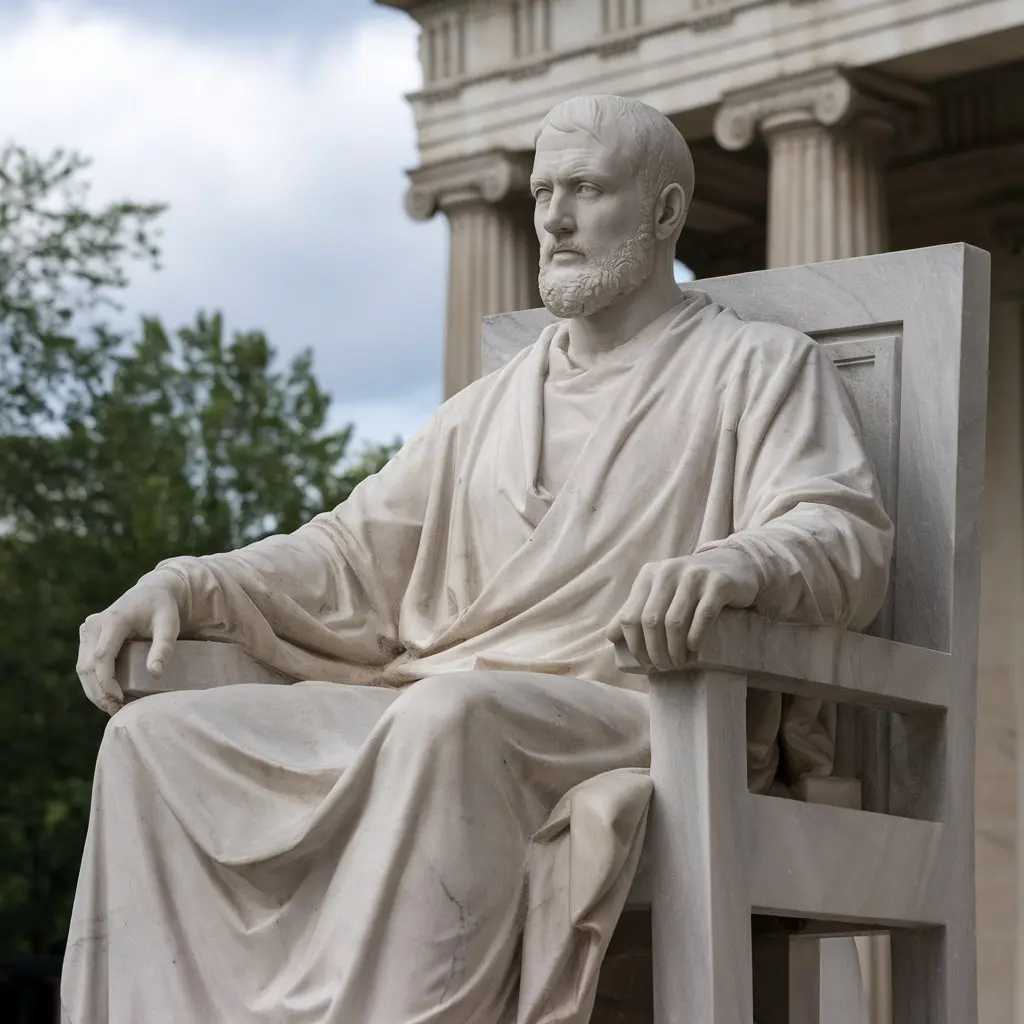Sculpture, as an ancient and revered art form, has stood the test of time. From the grandeur of ancient Greece to modern abstract works, sculptures continue to inspire, teach, and evoke emotions. They are more than just artistic creations; they embody history, culture, and profound lessons that apply to everyday life. Here, we explore some timeless lessons from the art of sculpture that go beyond aesthetics and craftsmanship.
1. Patience Brings Perfection
Creating a sculpture requires immense patience. Sculptors spend hours, days, or even years perfecting their pieces. Each chisel, carve, and smoothening stroke demands precision and care. Mistakes are often irreversible. Therefore, the artist must work thoughtfully, taking one step at a time.
Lesson: Patience leads to excellence. Whether in personal growth, relationships, or professional endeavors, taking time to perfect each step is crucial. Rushing through the process often results in errors that are hard to correct.
2. Start with a Vision
Every sculpture begins as an idea in the artist’s mind. Before picking up tools, the sculptor visualizes the final piece. They see what others might not—the potential within a raw block of stone or wood. The artist’s vision guides each step, from selecting materials to the final touches.
Lesson: Always have a clear vision before starting a task. Setting a goal helps you remain focused, even when challenges arise. Like a sculptor, hold on to that vision and use it as a guide.
3. Embrace Imperfections
No stone or piece of wood is perfect. Each material has flaws, cracks, and unique characteristics. Skilled sculptors do not discard imperfect pieces; they embrace them. They turn flaws into features, making each piece one-of-a-kind.
Lesson: Embrace imperfections in yourself and others. Flaws can be turned into strengths. Perfection is an illusion, and beauty often lies in what makes us unique.
4. Persistence Pays Off
Sculpting is not a quick process. Many pieces require continuous effort, adjustments, and dedication. The artist might face setbacks, but they persist, shaping, refining, and polishing until the sculpture stands complete.
Lesson: Persistence is key to success. Challenges are inevitable, but dedication to your goals will eventually lead to achievement. Never give up, even when progress seems slow.
5. Attention to Detail Matters
Sculptors pay meticulous attention to every small detail. A tiny mistake can alter the entire look of a piece. The smallest curve, line, or texture can change how the audience perceives the final artwork. Each stroke matters.
Lesson: In life, small details make a significant difference. Attention to the finer aspects of work, relationships, or projects can lead to better outcomes. Never underestimate the importance of the little things.
6. Master the Basics Before Experimenting
Before creating abstract or unconventional pieces, sculptors learn the basics. They master traditional techniques, understand proportions, and study the classics. Once they have a solid foundation, they experiment with new styles.
Lesson: Master the basics in any field before trying something new. A strong foundation provides the confidence and skills needed to innovate. Without basic knowledge, creative ideas might lack structure or purpose.
7. Adapt and Improvise
Sometimes, things don’t go as planned. A piece of stone may crack, or wood may splinter. Sculptors adapt, turning accidents into opportunities. They improvise, adjusting their designs without losing sight of the original vision.
Lesson: Flexibility is essential. Life is unpredictable, and plans may change. Adaptability allows you to handle unexpected challenges while staying true to your goals. Learn to improvise when necessary.
8. Find Beauty in Simplicity
Not all sculptures are intricate. Some of the most famous pieces are simple yet impactful. Ancient sculptures often use clean lines and minimalist designs to convey profound messages.
Lesson: Simplicity can be powerful. In a world obsessed with complexity, finding beauty in simplicity can bring clarity and peace. Focus on what truly matters, cutting away the unnecessary.
9. Communicate Without Words
Sculptures communicate stories, emotions, and messages without uttering a word. Each piece tells a tale, captures a moment, or represents an idea. Artists use their skills to convey powerful emotions that resonate with viewers.
Lesson: Communication goes beyond words. Body language, expressions, and actions often speak louder. Strive to be clear in your intentions, even when words are not enough.
10. Learn from Mistakes
A sculptor may make mistakes while carving, but each error becomes a learning experience. The artist may have to start over or find a way to incorporate the mistake into the design. Either way, they grow with each error.
Lesson: Mistakes are learning opportunities. They are not failures but lessons. Accept errors, learn from them, and use them to improve. Growth often comes from overcoming challenges.
11. The Power of Dedication and Passion
Successful sculptors are passionate about their work. They dedicate countless hours to perfecting their craft. This dedication goes beyond mere interest; it’s a deep passion that fuels their creativity and commitment.
Lesson: Passion drives success. When you are genuinely dedicated to something, the effort feels worthwhile. Follow your passions, and success will naturally follow.
12. Balance and Proportion Are Essential
Sculptures often represent harmony, balance, and proportion. Even abstract works follow certain rules to ensure they are visually appealing. Balance creates stability, while proportion provides perspective and realism.
Lesson: Balance is essential in life. Whether it’s work-life balance, emotional balance, or balancing relationships, finding harmony is crucial. Consider the proportions of your time, energy, and priorities.
13. Quality Over Quantity
A single well-crafted sculpture can leave a lasting impression. Sculptors often prioritize quality, focusing on producing one remarkable piece rather than many average ones. Excellence matters more than numbers.
Lesson: Focus on quality in your endeavors. Whether it’s work, relationships, or achievements, aim for excellence. It’s better to have a few high-quality experiences than many mediocre ones.
14. Value the Process, Not Just the Outcome
Sculpting is about more than the final piece; it’s about the journey. The artist learns, grows, and transforms throughout the creation process. Each stage, from conceptualizing to polishing, holds value.
Lesson: The journey is as important as the destination. Celebrate small victories along the way, and value the lessons learned during the process. Don’t focus solely on the end result.
15. Leave a Legacy
Many sculptures have survived centuries, standing as timeless symbols of cultures and eras. These pieces represent the legacy of their creators, speaking of the past and inspiring the future.
Lesson: Think about the legacy you want to leave. Your actions, words, and creations impact others. Consider how you want to be remembered and what contributions you wish to make.
16. Storytelling Through Art
Sculptures often tell a story—whether it’s about a historical event, a legendary hero, or a mythological tale. Artists use their skills to narrate stories that last through time, leaving an emotional and cultural impact.
Lesson: Everyone has a story to tell. Use your experiences, skills, and creativity to share your narrative with others. Stories are powerful tools for connecting and inspiring.
17. Overcoming Limitations
Sculptors often work with limited tools and resources. Despite these constraints, they create masterpieces. They learn to work within limitations, transforming challenges into creative opportunities.
Lesson: Limitations can spark creativity. When faced with constraints, find innovative solutions. Challenges can lead to new perspectives and unexpected successes.
18. Humility and Continuous Learning
Great sculptors remain humble. They never stop learning, even after years of experience. They study the works of others, attend workshops, and seek feedback. They know that mastery requires constant growth.
Lesson: Stay humble, no matter your accomplishments. A mindset of continuous learning leads to improvement. There is always room to grow, and every experience can be a lesson.
19. The Value of Craftsmanship
Sculptors are craftsmen. They take pride in their work, paying attention to every cut, polish, and detail. Craftsmanship is about dedication, pride in one’s work, and striving for excellence.
Lesson: Value craftsmanship in your work. Take pride in what you do, and strive for excellence. Even if your efforts go unnoticed, the sense of accomplishment is rewarding.
20. Art Has the Power to Inspire
Sculptures have inspired countless generations. They evoke emotions, encourage reflection, and spark creativity. The power of art lies in its ability to move people, to make them see the world differently.
Lesson: Inspiration can come from unexpected places. Keep an open mind and seek beauty in everyday life. Let yourself be inspired, and use that inspiration to motivate others.
Conclusion
The art of sculpture offers profound lessons that extend beyond the boundaries of art. It teaches patience, attention to detail, perseverance, and the beauty of imperfection. Each sculpture, whether ancient or modern, holds wisdom that can guide us in our daily lives. Embrace these lessons, and let them shape you, just as a sculptor shapes stone into a masterpiece.

